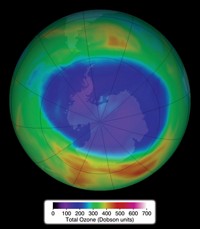Advertisement
Grab your lab coat. Let's get started
Welcome!
Welcome!
Create an account below to get 6 C&EN articles per month, receive newsletters and more - all free.
It seems this is your first time logging in online. Please enter the following information to continue.
As an ACS member you automatically get access to this site. All we need is few more details to create your reading experience.
Not you? Sign in with a different account.
Not you? Sign in with a different account.
ERROR 1
ERROR 1
ERROR 2
ERROR 2
ERROR 2
ERROR 2
ERROR 2
Password and Confirm password must match.
If you have an ACS member number, please enter it here so we can link this account to your membership. (optional)
ERROR 2
ACS values your privacy. By submitting your information, you are gaining access to C&EN and subscribing to our weekly newsletter. We use the information you provide to make your reading experience better, and we will never sell your data to third party members.
Environment
Mount St. Helens Quiets, but May Reawaken
by Elizabeth K. Wilson
October 11, 2004
| A version of this story appeared in
Volume 82, Issue 41
The nonstop earthquakes that rumbled under Washington state's Mount St. Helens for two weeks and signaled a possible imminent eruption settled down on Oct. 6, but scientists believe that the peace is only temporary.
The mountain belched steam and ash several times, before lapsing into a quietude that could last weeks or even months. But eventually, the mountain is expected to wake up, Thomas C. Pierson, vulcanologist with the U.S. Geological Survey (USGS) in Vancouver, Wash., said at a press conference. "It is possible that everything could shut down, but we think it's not probable," he said.
Even if Mount St. Helens does erupt in the near future, scientists don't expect it to be nearly as devastating as the famous 1980 eruption, in which the top 1,300 feet of the mountain collapsed and 57 people died.
Nevertheless, scientists are continuing to monitor the volcano closely, making overhead passes via helicopter to sample gases such as carbon dioxide, sulfur dioxide, and hydrogen sulfide. Radar, seismometers, and global positioning system devices keep tabs on hot spots and movement, including a quarter-mile-long bulge on the mountain's south side that has risen over 100 feet.
Analysis of the ash spewed out by the mountain shows little evidence for new pieces of the volcanic rock pumice, suggesting that upwelling molten rock, or magma, hasn't yet reached the surface.
The relatively minor levels of gases and ash emitted during this period of the mountain's activity are unlikely to pose a significant threat to the environment, said Jacob B. Lowenstern, vulcanologist with USGS in Menlo Park, Calif.





Join the conversation
Contact the reporter
Submit a Letter to the Editor for publication
Engage with us on Twitter